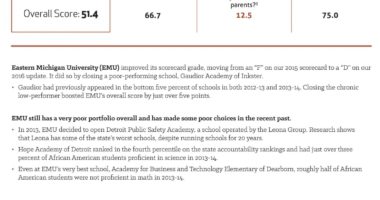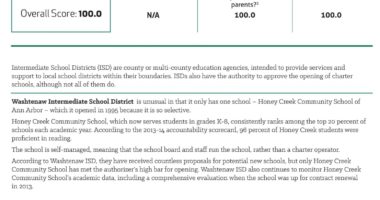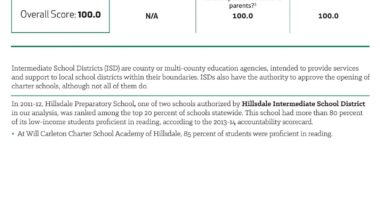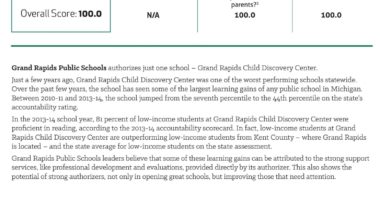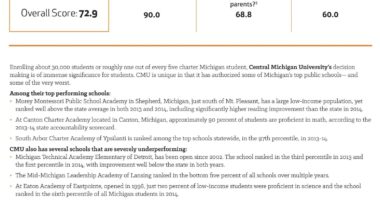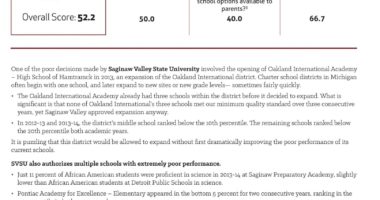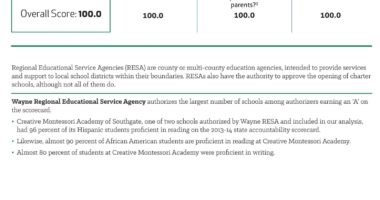Michigan Makes History with New School Funding Formula to Account for Needs of Students Living in Areas of Concentrated Poverty
For the first time in Michigan’s history, a conference committee of state legislators voted for a historic change in its school funding system to create an index that will invest dramatically more dollars in the public education of students based on their school district’s concentration of poverty. The new “Opportunity Index” would make Michigan among the nation’s first ten states with a funding formula that includes an index for concentrations of poverty, among states with similar funding systems. The index invests much more in students who attend public school districts with greater levels of poverty, regardless of region.
In the immediate term, the Opportunity Index will drive more than $950 million dollars — or more than $200 million more dollars than the FY23 state budget — to the public education of students who qualify for “at-risk” funding in the FY24 state school budget. The new state funding mechanism also sets new long-term goals for investing in Michigan’s students who qualify for at-risk funding that over time has the potential to invest more than $2.9 billion dollars annually in these students.
The state’s first Opportunity Index will move Michigan away from its longstanding tradition of funding students who qualify for at-risk funding at the same level, regardless of the depth of poverty that a child’s school district faces. The new index — developed based on what leading states and a growing body of research says is needed to close opportunity gaps for students from low-income backgrounds – has six bands of funding levels based on a student’s school district’s concentration of poverty.
The change is significant for a state that has long had one of the most regressive school funding systems in the nation.
For instance, Michigan’s school funding formula has for many years severely underinvested in students who qualify for at-risk funding, providing only an additional 11.5% to these students – a weight that has been among the lowest in the nation for states with similar funding formulas. Additionally, Michigan’s flat 11.5% weight treats all students who qualify for at-risk funding the same, despite the reality that the experience of living in poverty varies greatly by locale. The FY24 budget attempts to right this historic wrong by enshrining in law for the first time an Opportunity Index which sends more money to districts with higher concentrations of poverty.
The new Opportunity Index will divide Michigan’s school districts into six categories — or “bands” — based on the concentration of poverty in the district, or the percentage of students from economically disadvantaged backgrounds in the district.
Within each band, districts are assigned a percentage of the foundation allowance, also known as a weight. The weights increase as the concentration of poverty in a district increases. That means that districts will receive an additional amount on top of the foundation allowance based on the level of concentration of poverty in their district. Districts with higher levels of concentrated poverty are assigned a higher weight, and therefore will receive greater funding to account for the additional needs of their students.
The FY24 budget sets long term goal weights for each of these six bands, ranging from 35% to 47% which would mark an historic change in how Michigan funds students with the greatest needs. When fully implemented, the Index has the potential to invest more than $2.9 billion dollars in students who qualify for at-risk funding.
In FY24, the legislature is investing nearly $1 billion dollars into the Index – an increase of more than $200 million dollars from the FY23 at-risk appropriation. In the immediate term, districts will receive additional funding weights ranging from approximately 11.5% to 15.3% for each student qualifying for at-risk funding, depending on the district’s band.
The new bands are as follows:
| Opportunity Index Band | % Economically Disadvantaged Minimum | % Economically Disadvantaged Maximum | Goal Weight | FY24 Prorated Weight |
| 1 | 0% | 19.99% | 35% | 11.53% |
| 2 | 20% | 43.99% | 36% | 11.75% |
| 3 | 44% | 58.99% | 37.5% | 12.23% |
| 4 | 59% | 72.99% | 39% | 12.72% |
| 5 | 73% | 84.99% | 42% | 13.70% |
| 6 | 85% | 100% | 47% | 15.33% |
Districts within the first five bands receive their assigned weight and corresponding additional funding based on where exactly they fall within the band. This “sliding scale” means that the weights increase relative to each increase in poverty from 0% up to 84.99%. All school districts in the sixth band receive the same weight – a recognition that the experience of learning in a district with an 85% concentration of poverty is not meaningfully different than the experience of learning in a school district with a 100% concentration of poverty.
“This is a moment of both great progress and sober celebration,” said Amber Arellano, executive director of the Education Trust-Midwest and one of three chairs of the Michigan Partnership for Equity and Opportunity (MPEO) coalition. “We celebrate the tremendous progress made this year for students who have long been underserved. At the same time, Michigan is still woefully underinvesting in children from low-income backgrounds, English Learners and students with disabilities, even if the new long-term funding goals will be met for these student groups over time. This is the beginning of a real conversation about what fair funding should look like in Michigan.”


